The 1953 Chrysler Imperial was the first to have automotive air conditioning after 12 years of experiments by Packard in 1940 and Cadillac in 1941. Chrysler was on top of his competitors after installing the Airtemp air conditioning units to its Imperials in 1953. Airtemp was more standard and efficient than the complex rival air conditioners of 1953. Instead of cooling the air inside the car, it circulated and was also the highest capacity unit present on an automobile. It was easy to operate, had a single switch on the dashboard marked with low, medium, and high positions which the driver would select according to his wish. In about two minutes, the system was able to cool a Chrysler from 120 degrees to 85 degrees and completely eliminate humidity, dust, pollen and tobacco smoke simultaneously. It relied on fresh air and would draw in sixty percent more of air than any contemporary system, Airtemp would avoid the staleness associated with automotive air conditioning then.
It had small ducts that directed cool air toward the ceiling of the car where it would filter down around the passengers rather than blowing directly on them instead of the plastic tubes mounted on the package shelf as on GM and other cars. In 1954 the Imperial Custom acquired a new grille comprising of a heavy wraparound horizontal center bar with five ridges on top and installed circular signal lights. The rear fender stone guard was bigger than previous years but the rocker panel molding and rear fender chrome strip remained the same. Back up lights were positioned directly below the taillights. Air conditioning was standard on the Imperial Crown and center –opening rear doors.
